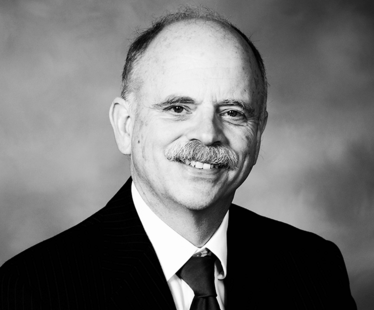Engineering Success
Sitting Down With… Andy Skibo, Executive Vice President, Operations at MedImmune, and Chairman of the International Society for Pharmaceutical Engineering (ISPE).

How did you get into your field?
I got my start in R&D at Monsanto in the 1960s. I put my chemical engineering degree from MIT to use developing car windshields and bulletproof glass for helicopters and planes being used in the Vietnam War. I first got involved in the pharma industry in the late 1970s, when I took at a job at Daniel Construction and Engineering to head up the new process engineering department of this new engineering division. My first assignment was to build a new pharmaceutical plant for Eli Lilly in Ireland. Next, I worked on a Roche project in Puerto Rico. I was hooked, and the majority of my projects since then have been in pharma.
What’s kept you working in the pharmaceutical industry?
What I’ve always enjoyed about the pharmaceutical industry – particularly biologics – is that whatever your role, you’re never far from the technology. It’s a business where a complex technical issue will be solved by a group that includes our youngest, brightest technical people from the lab all the way up to the grey hairs like me who will be sitting around the boardroom table, delving back into 40 years of experience. You are totally integrated as a team from top to bottom and I find that very energizing.
How have the challenges changed over the years?
Back in the early 1980s, I was with Genentech when we built the first large-scale mammalian cell culture plant. It was so new that we put up canvas around the half-completed building to hide the size of the holes for the bioreactors; no one would have believed that we could operate at that scale. Now, the core challenge is planning for capacity – what I call nine dimensional chess. The range in demand for oncology immunotherapy can differ by as much as 17 times. Now take a dozen products like this: do you need four plants or do you need a quarter of a plant? At $800 million a throw, that’s an investment decision you don’t want to get wrong. But there are no textbooks to give you the answers. We have built very sophisticated planning models, but we had to invent those models. I love that complexity – it’s what wakes me up in the morning.
How did you get involved with ISPE?
This is my first stint as Chairman but I have been on the board for 20 years and been involved with ISPE since before it was ISPE. To me the value of the Society is the network. It really plugs you into the industry. Before I start any major new project or make a difficult decision, the first thing I do is pick up the phone and call my peers – ISPE is one of the best platforms to get immediate exposure to valuable contacts. The ability to meet at the conference, or look at our online directory, and speak to people who have faced a similar problem to yours is worth its weight in platinum.
What are the key goals for ISPE in 2015 and beyond?
The last few years have been challenging for ISPE. ISPE’s original founding and heavy growth period in the 1980s and 90s was based on large investment in pharmaceutical capital facilities, mostly in small molecules. There was a heavy demand for engineering and manufacturing talent to get these facilities licensed and running. When that capital investment curve went flat, we needed to find a new business model.
First, we will be heavily shifting our focus to include more biomanufacturing. Right now, half of the industry pipeline is made up of biologics and I have seen projections suggesting that this could rise to 75 percent by 2020. But currently over 80 percent of our members work in small molecule manufacturing. They have strong skills in the industry, just not in biologics, so why not help those members transition into a career in biomanufacturing?
Second, for the industry as a whole, emerging markets are one of the main pillars of growth, so we want to help our members move from building a plant in the UK or US, to building one in China or Russia or the Middle East. Some emerging markets have real quality or regulatory issues and we also want to work closely with the regulatory agencies in those countries to help them understand what is involved in making a high-quality pharmaceutical plant.
How can we improve quality standards in emerging markets in the long run?
I believe we need a global quality network, with all countries adhering to the standards of highest quality that we take for granted in the US and Europe. At the moment, the problem is not just that products do not meet quality standards, it’s a lack of acceptance in some emerging markets that these standards are necessary.
What’s been your proudest achievement?
I have helped launch at least four new medicines and nothing gives you a greater sense of why we’re in this industry. At Genentech, they used to hand out flags on launch day and I still have every single one.



















